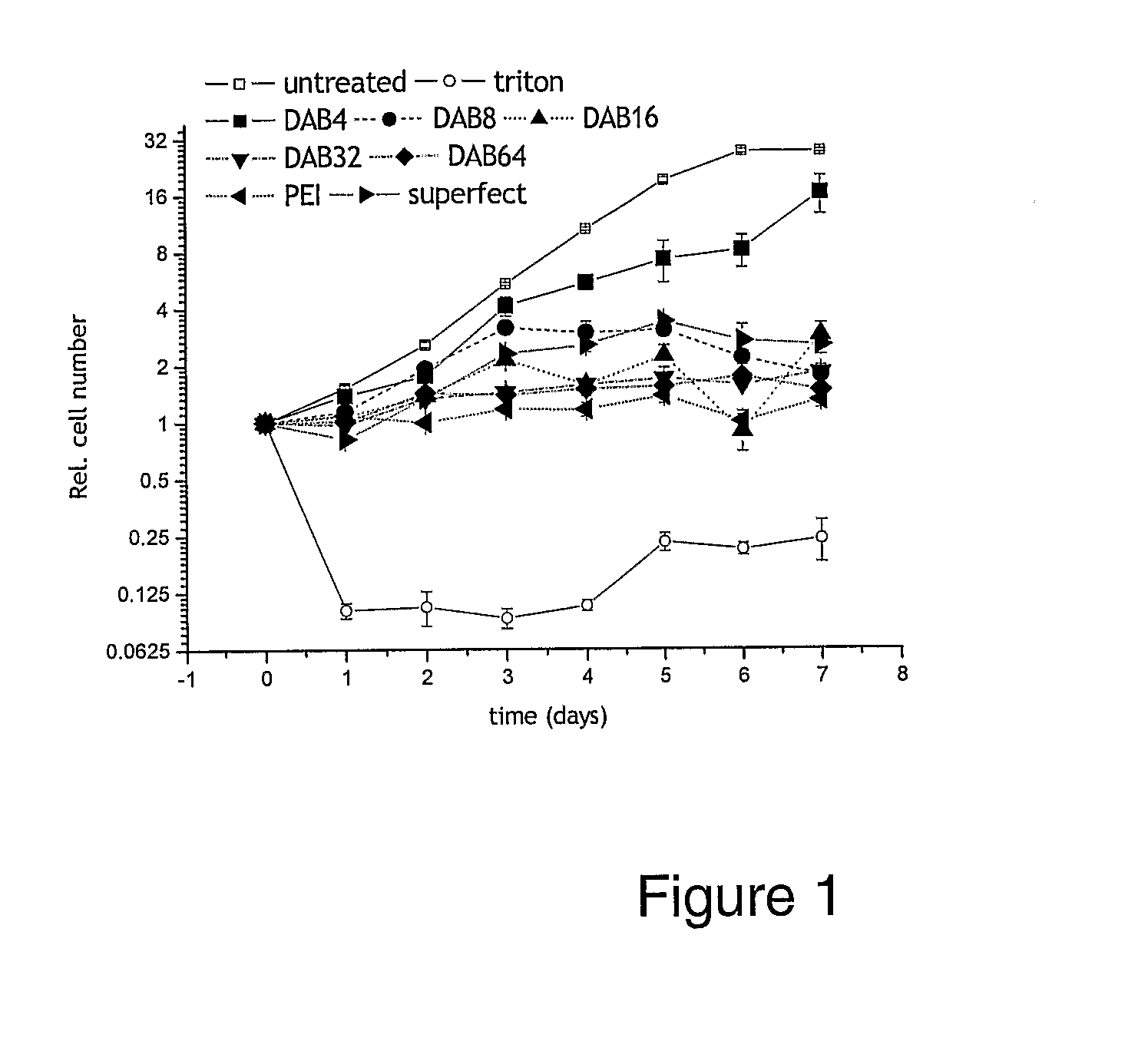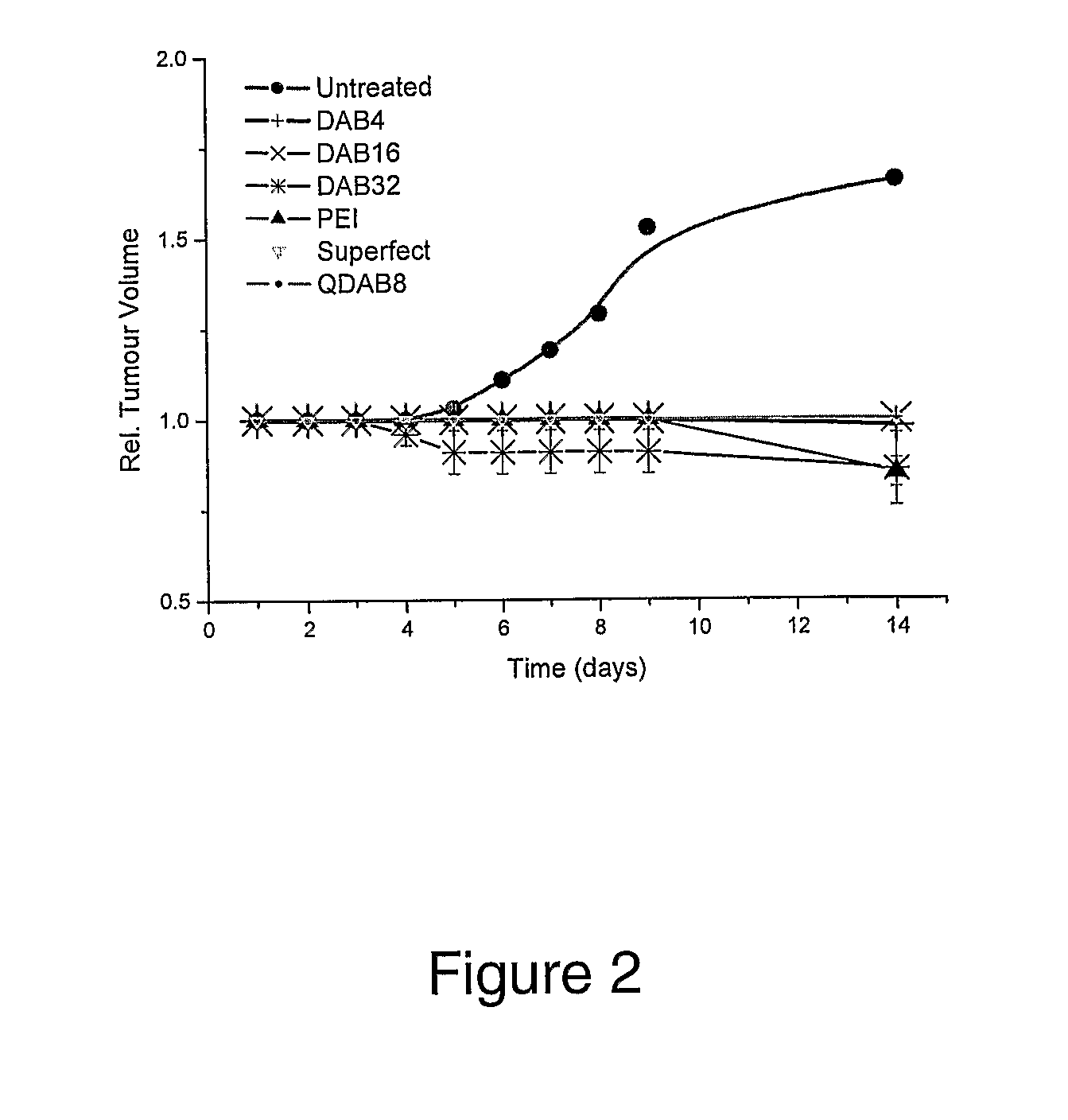Bioactive Polymers
a technology of bioactive polymers and polymers, which is applied in the direction of organic active ingredients, pharmaceutical active ingredients, synthetic polymeric active ingredients, etc., can solve the problems that their potential as therapeutic agents in their own right has, until now, been unrecognised
- Summary
- Abstract
- Description
- Claims
- Application Information
AI Technical Summary
Benefits of technology
Problems solved by technology
Method used
Image
Examples
Embodiment Construction
[0393]The following compounds were obtained from commercial sources: DAB4, DAB8, DAB16, DAB32, DAB64, SuperFect, linear polyethylenimine (22 kD).
[0394]Hyaluronic acid (HA) conjugates of DAB8 (generation 2 PPI dendrimer) and DAB16 (generation 3 PPI dendrimer) were synthesized according to the procedure outlined below.
[0395]Quaternised DAB8, DAB16, DAB32 and DAB64 (termed QDAB8, QDAB16, QDAB32 and QDAB64) were synthesized according to the method below, in which each of the nitrogen atoms of the terminal amino groups of these dendrimers is converted to a cationic quaternary ammonium group having three methyl groups bonded to the nitrogen atom.
Synthesis of Targeted Hyaluronic Acid DAB Dendrimers
[0396]Low molecular weight hyaluronic acid was synthesized by heat or enzyme degradation, as follows:
Heat Degradation (HA24, HA48)
[0397]500 mg hyaluronic acid (500 mg) was added to acid buffer solution [tri-hydroxy methyl-amino methane (0.1M), potassium chloride (0.1M), monobasic potassium phosph...
PUM
| Property | Measurement | Unit |
|---|---|---|
| weight ratio | aaaaa | aaaaa |
| molecular weight | aaaaa | aaaaa |
| pH | aaaaa | aaaaa |
Abstract
Description
Claims
Application Information
 Login to View More
Login to View More - R&D
- Intellectual Property
- Life Sciences
- Materials
- Tech Scout
- Unparalleled Data Quality
- Higher Quality Content
- 60% Fewer Hallucinations
Browse by: Latest US Patents, China's latest patents, Technical Efficacy Thesaurus, Application Domain, Technology Topic, Popular Technical Reports.
© 2025 PatSnap. All rights reserved.Legal|Privacy policy|Modern Slavery Act Transparency Statement|Sitemap|About US| Contact US: help@patsnap.com



